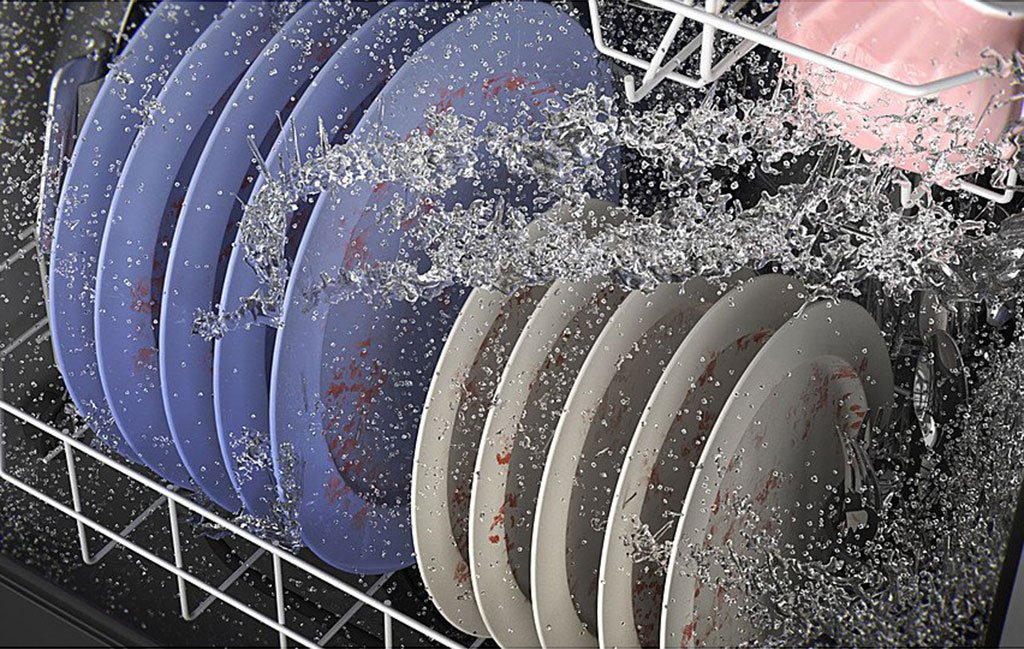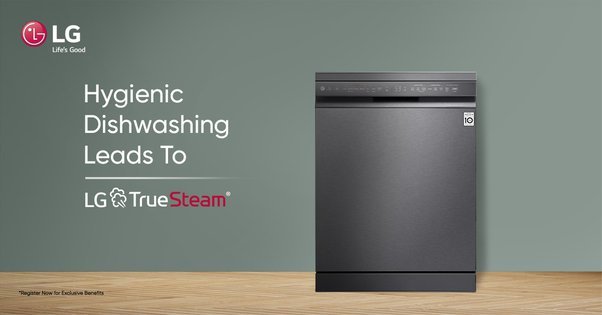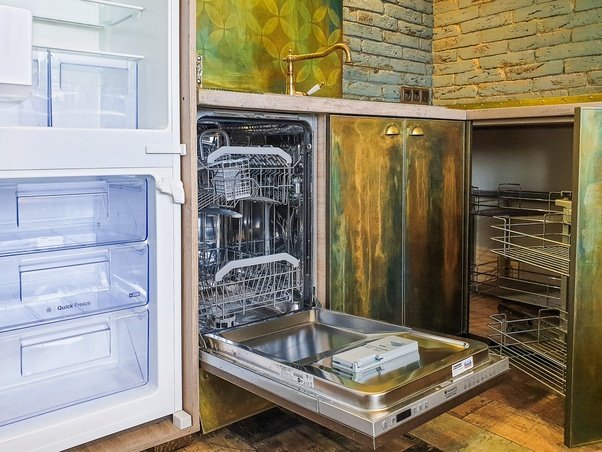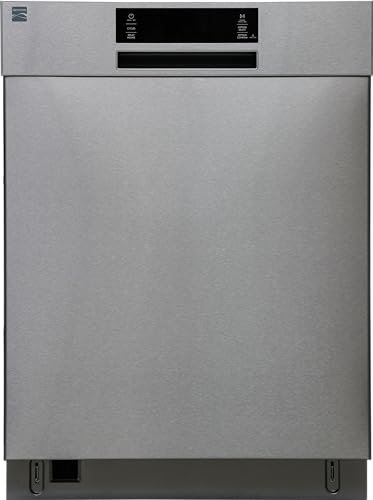If you own a GE dishwasher, you know how convenient and time-saving it can be to have sparkling clean dishes without the hassle of handwashing. However, encountering the problem of your GE dishwasher not filling with water can be frustrating and disrupt your daily routine.
When you start a dishwasher cycle, the first step is for the dishwasher to fill with water. This water is necessary to properly dissolve detergent, spray water onto the dishes, and begin the cleaning process. If your GE dishwasher not getting water, it can prevent the dishwasher from operating effectively, resulting in dirty dishes and wasted time.
No tension! Here we will provide you with step-by-step instructions and tips to fix the issue of your problem. We will cover common reasons for this problem, such as a faulty water inlet valve, clogged water supply line, or a malfunctioning float switch. We will also provide preventative maintenance tips and guidance on when to seek professional help.

Common Reasons for GE Dishwasher Not Filling with Water
Is your GE dishwasher refusing to fill up with water? Don’t worry, there are several common reasons that could be causing this issue. Let’s explore them one by one.
Faulty Water Inlet Valve
The water inlet valve is responsible for allowing water to flow into the dishwasher. If it’s malfunctioning, it may not open properly, resulting in little or no water entering the dishwasher. This can be caused by a worn-out valve or a clog in the valve’s screens or solenoid.
Clogged Water Supply Line
The water supply line delivers water from your home’s water source to the dishwasher. Over time, it can become clogged with debris, minerals, or limescale, restricting the water flow. This can lead to inadequate water filling or no water at all.
Malfunctioning Float Switch
Float switch is a safety feature that prevents the dishwasher from overflowing. It’s a small mechanism that floats in the dishwasher’s tub and sends a signal to the water inlet valve to stop filling with water once the appropriate level is reached. If the float switch is stuck or damaged, it prevents the dishwasher from filling with water.
How to Diagnose The Root Cause of GE Dishwasher Not Getting Water Issue
Here are some simple steps to help you diagnose the faulty parts for your dishwasher water filling problem.
Inspect the Water Inlet Valve
Water inlet valve is usually located at the bottom of the dishwasher behind the kick plate. Start by turning off the power and water supply to the dishwasher. Then, carefully remove the kick plate and locate the water inlet valve.
Check for any visible signs of damage or wear, such as cracks or leaks. If the valve appears to be faulty, it may need to be replaced.
Check for Clogs in the Water Supply Line
Water supply line is connected to the water inlet valve and delivers water to the dishwasher. Inspect the supply line for any clogs, debris, or mineral deposits that may be obstructing the water flow.
If you find any clogs, carefully remove them using a soft brush or a cloth. Be sure to turn off the water supply before disconnecting the supply line and avoid using sharp objects that may damage the line.
Test the Float Switch
Float switch is usually located in the bottom of the dishwasher tub and is responsible for preventing overfilling. Gently lift the float assembly and check for any debris or obstructions that may be preventing it from moving freely. If the float switch appears to be stuck or damaged, it may need to be replaced.
When inspecting these components, look for any signs of damage or wear, such as cracks, leaks, or discoloration. If any of the components are found to be faulty, it’s important to replace them with genuine GE dishwasher parts to ensure proper functioning.
How to Fix GE Dishwasher Not Filling With Water Problem?
Once you have identified the root cause of the issue, it’s time to take action and fix your ge dishwasher not getting water. Here are detailed instructions on how to address each of the common issues:
Replace a Faulty Water Inlet Valve
If you have determined that the water inlet valve is faulty, you will need to replace it. Start by turning off the power and water supply to the dishwasher. Remove the kick plate to access the water inlet valve. Disconnect the electrical connections and water supply line from the valve.
Then, using a screwdriver or pliers, carefully remove the valve from the dishwasher. Install the new water inlet valve by connecting the electrical connections and water supply line. Finally, reattach the kick plate and restore power and water supply to the dishwasher.
Clear Clogs from the Water Supply Line
If you have identified clogs in the water supply line, you will need to clear them to restore proper water flow. Turn off the water supply to the dishwasher and disconnect the supply line from the water inlet valve.
Use a soft brush or cloth to carefully remove any debris or mineral deposits from the supply line. Once the line is clear, reconnect it to the water inlet valve and turn on the water supply.
Adjust/Replace a Malfunctioning Float Switch
If the float switch is stuck or damaged, it may need to be adjusted or replaced. To adjust the float switch, gently lift the float assembly and ensure it moves freely up and down. If it’s still stuck, you may need to replace it.
To replace the float switch, first, turn off the power to the dishwasher. Then, locate the float switch in the bottom of the dishwasher tub and carefully disconnect the wires connected to it. Remove the float switch and install the new one in its place. Reconnect the wires and restore power to the dishwasher.
Preventative Maintenance and Tips For Future Issues
Taking proactive measures to maintain your GE dishwasher will help prevent future occurrences of water filling problems. Here are some tips and guidance on preventative maintenance:
Regular Cleaning
Keeping your dishwasher clean is essential for its smooth operation. Regularly remove food debris, grease, and residue from the dishwasher’s filter, spray arm, and other components. Wipe down the interior and exterior of the dishwasher, including the door gasket and control panel, with a soft cloth or sponge.
Clean the detergent dispenser and rinse aid dispenser as well. Avoid using abrasive cleaners or tools that could scratch or damage the dishwasher.
Checking for Clogs
Periodically inspect the water inlet valve, water supply line, and float assembly for any clogs or blockages. If you notice any debris or mineral deposits, carefully clean them to ensure proper water flow. Clogs in these areas can restrict water from filling the dishwasher, leading to the “not filling with water” problem.
Inspecting Components
Regularly inspect the water inlet valve, float switch, and other crucial components of your dishwasher for signs of wear and tear. Look for any cracks, leaks, or damage that may affect their performance. Replace any faulty or damaged parts promptly to avoid further issues.
Proper Use and Care
Follow the manufacturer’s instructions for loading dishes, using detergent and rinse aid, and selecting the appropriate wash cycle for your dishes. Overloading the dishwasher or using too much detergent can cause excess suds, leading to water filling issues.
Avoid using hot water when running the faucet or other appliances during a dishwasher cycle, as it may affect the water temperature and pressure.
When to Seek Professional
While many issues can be resolved through DIY troubleshooting and repairs, there may be situations where it is necessary to seek professional help. Here are some scenarios where you should consider contacting a qualified technician or reaching out to the manufacturer for assistance:
Complex Repairs
If the troubleshooting steps and repairs outlined earlier seem complicated or require technical expertise, it may be best to seek professional help. For example, if you need to replace the water inlet valve or perform more advanced repairs on the dishwasher’s internal components, it’s important to have someone with experience and knowledge handle the task to avoid causing further damage.
Lack of Comfort or Experience
If you’re not comfortable with DIY repairs or lack experience in handling dishwasher repairs, it’s wise to seek professional assistance. Working with electrical components, water connections, and delicate dishwasher parts can be challenging and potentially dangerous if not handled properly. It’s better to seek expert help to avoid risking your safety or causing further damage to your dishwasher.
Manufacturer Assistance
If your dishwasher is still under warranty or if you need assistance with obtaining replacement parts, it’s advisable to contact the manufacturer. Many manufacturers have customer service helplines or online support options where you can get guidance on repairs, find authorized service providers, or order genuine replacement parts.
When seeking professional help, it’s important to choose a qualified technician or service provider who is experienced in GE dishwasher repairs. You can ask for recommendations from friends or family, check online reviews, or contact the manufacturer for a list of authorized service providers in your area. Be sure to inquire about service fees, warranty coverage, and any other relevant details before proceeding.
Remember, safety should always be a top priority when dealing with dishwasher repairs. If you’re not confident in your ability to troubleshoot or repair the issue on your own, it’s best to seek professional assistance to avoid further complications and ensure a proper and safe repair.
FAQ
Why is my GE dishwasher not filling with water?
There could be several reasons, such as a faulty water inlet valve, a clogged water supply line, or a malfunctioning float switch. These issues can disrupt the normal water intake process, resulting in a dishwasher that does not fill with water as it should.
GE dishwasher hums but no water – how to fix?
If your GE dishwasher hums but does not fill with water, it could be due to a faulty water inlet valve or a clogged water supply line. To fix this issue, you can try checking for any clogs in the water supply line and clearing them.
If that doesn’t work, you may need to replace the water inlet valve with a new one to restore proper water flow to your dishwasher. It’s best to follow the manufacturer’s instructions or seek professional help if needed.
Can I fix my GE dishwasher water getting issue myself?
Yes, you may be able to fix your dishwasher’s water filling issue yourself, depending on the cause of the problem. Simple troubleshooting steps, such as checking for clogs, inspecting components, and replacing faulty parts like the water inlet valve, can often be done by homeowners with basic DIY skills.
However, it’s important to exercise caution and follow proper safety precautions. If you’re not comfortable with DIY repairs or the issue is complex, it’s best to seek professional help.
What can cause a clogged water supply line in my GE dishwasher?
The water supply line can get clogged due to debris, minerals, or hard water buildup over time.
What if I’m not comfortable performing repairs on my GE dishwasher?
If you’re not confident or experienced in repairing appliances, it’s best to seek professional help from qualified technicians or contact the manufacturer for assistance.
Can using non-genuine replacement parts cause issues water filling?
Yes, using non-genuine replacement parts may not fit properly or function correctly, leading to further issues with the dishwasher not filling with water.
How often should I perform preventative maintenance on my GE dishwasher?
Regular cleaning, checking for clogs, and inspecting components should be performed periodically as recommended by the manufacturer or as outlined in the article to avoid future occurrences of the issue.
Can improper use or care of my GE dishwasher cause it to not fill with water?
Yes, improper use or neglecting regular maintenance can cause damage or malfunction of components, including the water inlet valve or float switch, resulting in the issue of the dishwasher not filling with water.
Can I adjust the float switch on my GE dishwasher?
Yes, you can adjust the float switch according to the manufacturer’s instructions or as detailed in the article if it’s a mechanical float switch.
How do I find a qualified technician to repair my GE dishwasher?
You can contact the manufacturer for a list of authorized service providers or seek recommendations from friends, family, or online reviews.
How long does it typically take to fix a water filling issue?
The time required to fix the issue depends on the specific problem and your familiarity with appliance repairs. It could range from a few minutes to a couple of hours, or even longer if you need to order and wait for replacement parts or schedule a professional technician.
Wrap Up
Dealing with a GE dishwasher not filling with water can be a frustrating issue for homeowners. However, by following the steps and tips outlined above, you can successfully diagnose and fix common issues that may be causing the problem. Remember to prioritize safety, follow the outlined steps and tips, and seek professional help if needed.





Leave a Reply